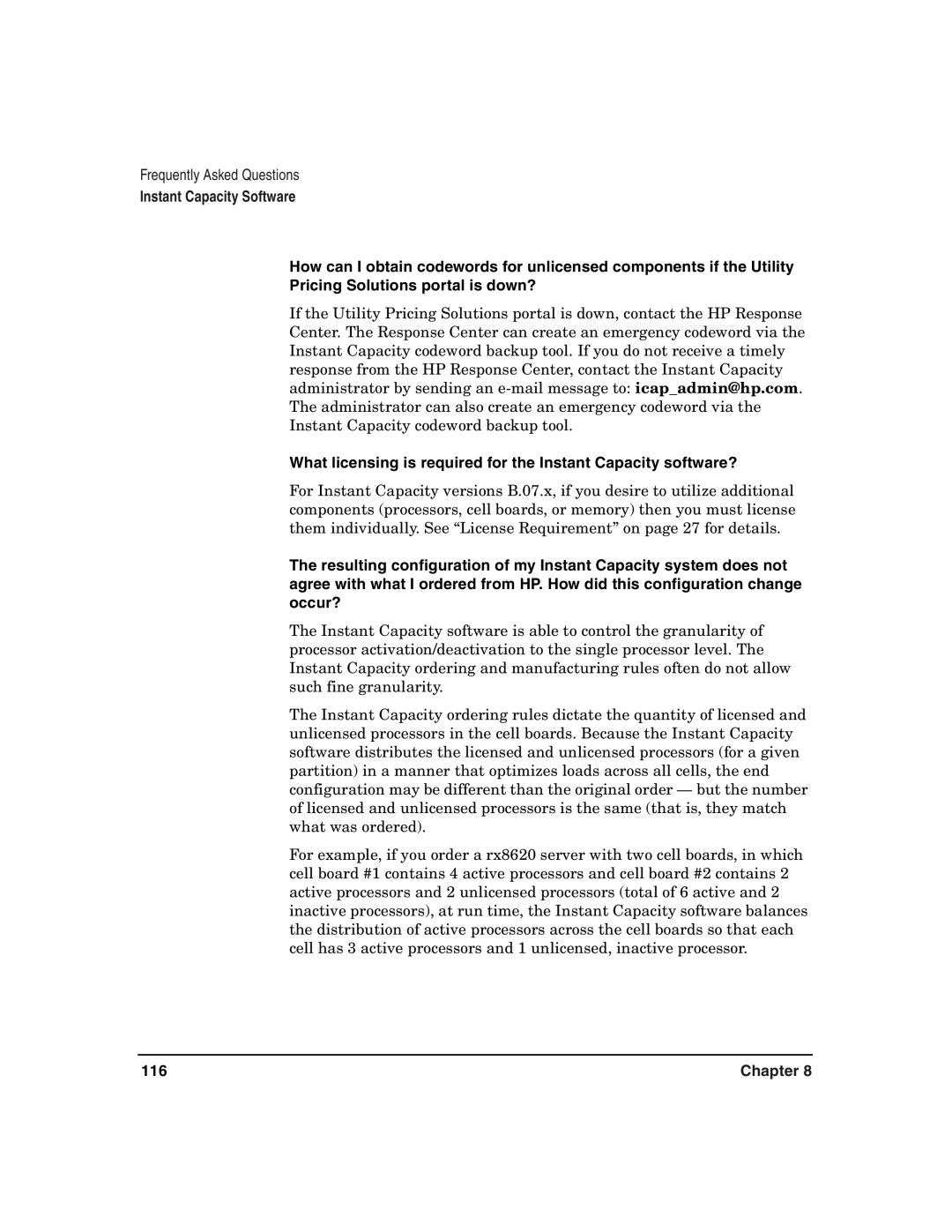Frequently Asked Questions
Instant Capacity Software
How can I obtain codewords for unlicensed components if the Utility Pricing Solutions portal is down?
If the Utility Pricing Solutions portal is down, contact the HP Response Center. The Response Center can create an emergency codeword via the Instant Capacity codeword backup tool. If you do not receive a timely response from the HP Response Center, contact the Instant Capacity administrator by sending an
What licensing is required for the Instant Capacity software?
For Instant Capacity versions B.07.x, if you desire to utilize additional components (processors, cell boards, or memory) then you must license them individually. See “License Requirement” on page 27 for details.
The resulting configuration of my Instant Capacity system does not agree with what I ordered from HP. How did this configuration change occur?
The Instant Capacity software is able to control the granularity of processor activation/deactivation to the single processor level. The Instant Capacity ordering and manufacturing rules often do not allow such fine granularity.
The Instant Capacity ordering rules dictate the quantity of licensed and unlicensed processors in the cell boards. Because the Instant Capacity software distributes the licensed and unlicensed processors (for a given partition) in a manner that optimizes loads across all cells, the end configuration may be different than the original order — but the number of licensed and unlicensed processors is the same (that is, they match what was ordered).
For example, if you order a rx8620 server with two cell boards, in which cell board #1 contains 4 active processors and cell board #2 contains 2 active processors and 2 unlicensed processors (total of 6 active and 2 inactive processors), at run time, the Instant Capacity software balances the distribution of active processors across the cell boards so that each cell has 3 active processors and 1 unlicensed, inactive processor.
116 | Chapter 8 |
